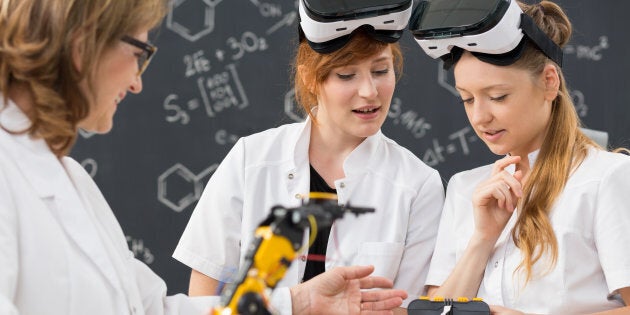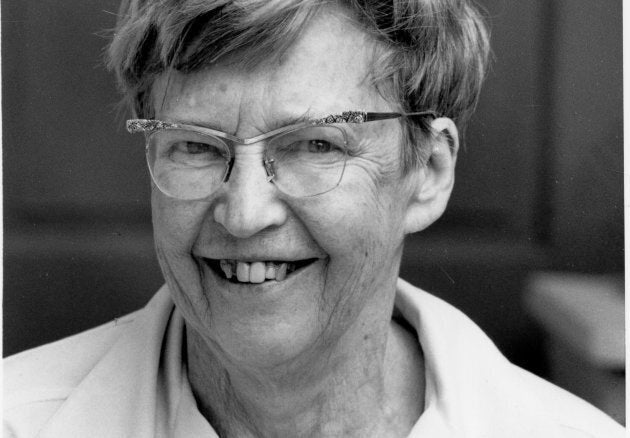
By Senator Art Eggleton and Senator Raymonde Saint-Germain
This month we celebrated the International Day of Women and Girls in Science — and there's much to celebrate. But also, much work to do.
It's a day to celebrate just how far we've come since Elsie MacGill, aircraft designer and Canada's first female engineer, was asked to leave the University of British Columbia in 1921 because of her gender.

If that accomplished entrepreneur and eventual MIT PhD graduate were alive today, almost 100 years later, would she be impressed that 20 per cent of Canada's post-secondary STEM-field students are female? Or would she wonder why the ratio wasn't better?
I personally think the under-sung "Queen of the Hurricanes" would be shaking her head, alongside many Canadians, at our discouraging stats.
While jobs in STEM-related domains are growing three times faster than other parts of the economy and paying 12 per cent higher, these jobs employ less than 25 per cent women. Only 13 per cent of professional engineers are not male.
And while a broadening swath of industries are demanding STEM knowledge, only 20 per cent of Canada's post-secondary STEM students are female. Meanwhile, other countries surge ahead: in India, STEM students are 33 per cent female; in Jordan and Tunisia, 38 per cent.
More alarmingly, new reports are finding even more inequities that go unnoticed. TD Bank's Chief Economist, Beata Caranci, in "Women and STEM: Bridging the Divide," found that while more women are getting STEM degrees, they are still disproportionately slotted into their companies' lower-paying technical roles, rather than professional roles.
The reasons for the disparities are myriad and complex, but in the interest of action, let's focus on solutions. A recent Open Caucus in the Senate included panelists who are business leaders, academics and teachers. They pointed to three main ways Canada can improve its STEM gender deficit.

1. Girls need more active female STEM role models at a much younger age.
Panelist Anjali Agarwal, Professor & Associate Chair of Electrical and Computer Engineering at Concordia University, maintains that Asia is ahead of North America because families encourage both boys and girls into STEM fields for the promise of higher wages, security and prestige. "It starts at home, with our parents," says Dr. Agarwal.
And it continues in the earliest grades. Statistically, girls tend not to choose the more math-intensive STEM paths due to math anxiety, discovered Ismael Mourifié, Assistant Professor of Economics at the University of Toronto. This springs from gender stereotyping, not lack of math ability.
How to fix this? Says Dr. Mourifié: "We need to invest in our elementary teachers' abilities and love of math to energize girls at a very young age. We must also show children that math ability is not innate: it's just hard work."
2. Public elementary schools must do even more to fuel young people's STEM understanding and passion.
Beata Caranci, who had one female professor in her six years of post-secondary economics education, wants to see public schools fire STEM passion.
With much of our STEM interventions based in camps that are too expensive for many Canadians, Caranci is concerned that these efforts may be creating more inequity. Placing them within the public school system would help all children see the arc and possibilities of an education and career in STEM fields.
"The problem is bigger than we think. Young girls need more active role models who can take down the barriers for us."Sophia, 9
3. We need to examine and change how we teach STEM topics.
Concordia's Dr. Agarwal wants to see engineering education embrace more social aspects like the human factors and societal benefits of good design.
Doug Dokis, Senior Advisor in the National Indigenous Youth in STEM Program at Actua, agrees. "When we can connect modern western knowledge with the cultural contributions of ancient technology and architecture, healing botany, original mathematics and astronomy, we'll be able to show our students the interconnectedness of the physical world of science with the human."
When STEM education can embrace a wider world view, it will interest a broader range of students, including indigenous women and girls.
The youngest participant in our Feb. 7 Open Caucus echoed these three recommendations.
Nine-year-old Sophia, an entrepreneur and girls-in-STEM advocate, wondered what we adults could do for her generation, and what they could do for us. Then she gave us old folks a hint: "The problem is bigger than we think. Young girls need more active role models who can take down the barriers for us."
The International Day of Women and Girls in Science is an opportunity to take a stand for all women and girls in science. But in another hundred years, I hope this day will continue to be a celebration of successes, because Sophia and her daughters and her granddaughters will be free from gender biases and barriers, doing what they love and accomplishing great things in the fields of science, technology, engineering and math.
Senator Art Eggleton is a member of the Canadian Senate from Toronto. He currently serves as Chair of the Standing Committee on Social Affairs, Science and Technology.
Senator Saint-Germain is Deputy Facilitator of the Independent Senators Group. She was appointed to the Senate in 2016, after two terms as the Québec Ombudsman and a distinguished career in the public administration.